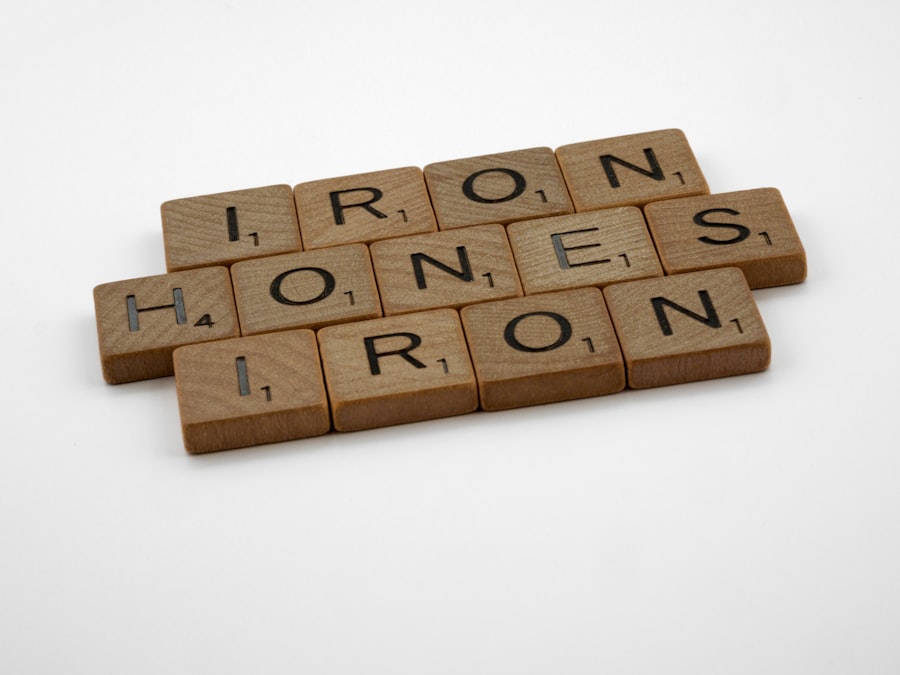As you age, your body undergoes numerous changes, and one of the less discussed issues is iron overload. This condition, characterized by an excessive accumulation of iron in the body, can lead to serious health complications if left unaddressed. While iron is an essential mineral necessary for various bodily functions, including oxygen transport and energy production, too much of it can be detrimental, particularly in older adults.
Understanding iron overload is crucial for maintaining your health and well-being as you navigate the later stages of life. Iron overload can manifest in various ways, often going unnoticed until it reaches a critical level. In elderly individuals, the risk of developing this condition increases due to factors such as dietary habits, underlying health issues, and the natural decline in the body’s ability to regulate iron absorption.
By recognizing the signs and symptoms of iron overload early on, you can take proactive steps to manage your health and prevent potential complications.
Key Takeaways
- Iron overload is a common condition in elderly individuals and can lead to serious health complications if left untreated.
- Causes of iron overload in the elderly can include genetic disorders, excessive iron intake, and chronic blood transfusions.
- Common symptoms of iron overload in the elderly include fatigue, joint pain, and abdominal pain.
- Physical symptoms to look out for include liver enlargement, skin discoloration, and heart palpitations.
- Cognitive and emotional symptoms to watch for include memory loss, depression, and irritability.
Understanding the Causes of Iron Overload
Iron overload can arise from several different sources, and understanding these causes is essential for effective management. One primary cause is hereditary hemochromatosis, a genetic disorder that leads to excessive iron absorption from the diet. If you have a family history of this condition, you may be at a higher risk.
Additionally, repeated blood transfusions can contribute to iron overload, as each unit of transfused blood contains a significant amount of iron that your body cannot easily excrete. Another contributing factor is excessive dietary intake of iron-rich foods or supplements. While iron is vital for health, consuming it in excess—especially in the form of supplements—can lead to an overload situation.
Furthermore, certain medical conditions such as liver disease or chronic hemolytic anemia can also disrupt the body’s ability to manage iron levels effectively. By being aware of these causes, you can make informed choices about your diet and health management.
Common Symptoms of Iron Overload in Elderly
Recognizing the symptoms of iron overload is crucial for early intervention. In many cases, symptoms may be subtle or mistaken for other age-related issues. You might experience fatigue or weakness that seems disproportionate to your activity level.
This fatigue can stem from the body’s inability to utilize oxygen effectively due to excess iron interfering with cellular processes. Additionally, you may notice joint pain or stiffness, which can be attributed to iron deposits in the joints. Another common symptom is abdominal pain or discomfort, which may be accompanied by changes in bowel habits.
You might find yourself experiencing constipation or diarrhea without a clear cause. These gastrointestinal symptoms can be particularly concerning as they may lead to further complications if not addressed promptly. Being vigilant about these signs can help you seek medical advice sooner rather than later.
Physical Symptoms to Look Out for
| Symptom | Description |
|---|---|
| Fever | An abnormal rise in body temperature, often a sign of infection. |
| Cough | A sudden expulsion of air from the lungs, often due to irritation or infection. |
| Shortness of breath | Difficulty in breathing, often associated with respiratory or cardiac conditions. |
| Fatigue | Feeling of extreme tiredness or lack of energy, often persistent and unexplained. |
| Headache | Pain or discomfort in the head, often caused by stress, illness, or other factors. |
In addition to general fatigue and abdominal discomfort, there are specific physical symptoms that you should be aware of when it comes to iron overload. One notable symptom is skin discoloration, often described as a bronze or gray hue. This change occurs due to the deposition of excess iron in the skin and can be an early indicator of iron overload.
If you notice any unusual changes in your skin tone, it’s worth discussing with your healthcare provider. You may also experience more severe physical symptoms such as heart palpitations or irregular heart rhythms. Excessive iron can accumulate in the heart muscle, leading to conditions like cardiomyopathy, which affects your heart’s ability to pump blood effectively.
If you find yourself feeling short of breath or experiencing chest pain during physical activity, it’s essential to seek medical attention promptly. These symptoms can indicate serious complications that require immediate intervention.
Cognitive and Emotional Symptoms to Watch for
Iron overload doesn’t just affect your physical health; it can also have significant cognitive and emotional implications. You might find yourself experiencing memory lapses or difficulty concentrating, which can be frustrating and concerning. Research suggests that excess iron may contribute to neurodegenerative diseases, making it vital to monitor any cognitive changes as you age.
Emotional symptoms are equally important to consider. You may feel increased irritability or mood swings that seem out of character for you. Some individuals report feelings of depression or anxiety associated with iron overload, which can further complicate your overall well-being.
If you notice these emotional changes alongside physical symptoms, it’s crucial to discuss them with your healthcare provider for a comprehensive evaluation.
Complications Associated with Iron Overload

The complications arising from untreated iron overload can be severe and life-altering. One of the most significant risks is liver damage, which can progress to cirrhosis or even liver cancer over time. The liver plays a crucial role in regulating iron levels, and excessive accumulation can lead to inflammation and scarring.
If you have a history of liver issues or consume alcohol regularly, this risk becomes even more pronounced. Additionally, iron overload can lead to diabetes due to its impact on pancreatic function. The pancreas is responsible for insulin production, and excess iron can interfere with this process, increasing your risk of developing type 2 diabetes.
Heart problems are another major concern; as mentioned earlier, excess iron can lead to cardiomyopathy and other cardiovascular issues that could significantly impact your quality of life.
Risk Factors for Iron Overload in Elderly
Several risk factors can increase your likelihood of developing iron overload as you age. Genetic predisposition plays a significant role; if you have a family history of hemochromatosis or other related conditions, your risk is heightened. Additionally, men are generally at a higher risk than women due to differences in iron loss through menstruation.
Chronic illnesses such as liver disease or certain types of anemia can also contribute to increased iron levels in the body. If you have undergone multiple blood transfusions or have been prescribed high doses of iron supplements for any reason, these factors should be taken into account as well. Being aware of these risk factors allows you to take proactive measures in consultation with your healthcare provider.
Diagnostic Tests for Iron Overload
If you suspect that you may be experiencing symptoms of iron overload, diagnostic testing is essential for confirmation and management. Your healthcare provider will likely start with a simple blood test to measure serum ferritin levels, which indicate the amount of stored iron in your body. Elevated ferritin levels may suggest an overload situation that requires further investigation.
In addition to serum ferritin tests, other tests such as transferrin saturation and liver function tests may be conducted to assess how well your body is managing iron levels and whether any organ damage has occurred. In some cases, a liver biopsy may be necessary to evaluate the extent of iron accumulation in the liver tissue. Early diagnosis through these tests is crucial for effective management and treatment.
Treatment Options for Iron Overload
Once diagnosed with iron overload, several treatment options are available to help manage the condition effectively. One common approach is therapeutic phlebotomy, a procedure that involves regularly removing blood from your body to decrease iron levels. This method mimics blood donation and helps reduce excess iron while also improving overall health.
In some cases, chelation therapy may be recommended as an alternative treatment option. This involves administering medications that bind to excess iron in the bloodstream, allowing it to be excreted through urine. Your healthcare provider will determine the most appropriate treatment plan based on your individual circumstances and overall health status.
Lifestyle Changes to Manage Iron Overload
In addition to medical treatments, making lifestyle changes can significantly impact your ability to manage iron overload effectively. One key adjustment is modifying your diet; reducing intake of iron-rich foods such as red meat and fortified cereals can help lower overall iron levels in your body. Instead, focus on incorporating more fruits, vegetables, and whole grains into your meals.
Staying hydrated is also essential; drinking plenty of water aids in kidney function and helps flush out excess minerals from your system. Regular physical activity can further support your overall health by improving circulation and promoting better metabolic function. Engaging in moderate exercise tailored to your abilities can make a significant difference in managing your condition.
Importance of Seeking Medical Advice for Iron Overload
Finally, seeking medical advice is paramount when it comes to managing iron overload effectively. If you notice any symptoms or have risk factors associated with this condition, don’t hesitate to consult with your healthcare provider for a thorough evaluation. Early detection and intervention are key components in preventing serious complications related to excessive iron accumulation.
Your healthcare provider can guide you through diagnostic testing options and develop a personalized treatment plan tailored to your needs. Remember that managing iron overload is not just about addressing immediate symptoms; it’s about taking proactive steps toward long-term health and well-being as you age gracefully. By staying informed and engaged in your health journey, you empower yourself to make choices that promote a better quality of life.
Iron overload, also known as hemochromatosis, can present various symptoms in the elderly, including fatigue, joint pain, and abdominal discomfort. It is crucial for seniors to be aware of these symptoms as they can often be mistaken for normal aging processes. Early detection and management are essential to prevent complications such as liver disease, diabetes, and heart problems. For more detailed information on the symptoms and management of iron overload in the elderly, you can read a related article on this topic by visiting com/’>Explore Senior Health.
This resource provides valuable insights into how seniors can maintain their health and well-being while managing conditions like iron overload.
💰 The Secret History of the Dollar: How Oil Replaced Gold (The Petrodollar Mystery)
FAQs
What are the common symptoms of iron overload in the elderly?
Some common symptoms of iron overload in the elderly include fatigue, weakness, joint pain, abdominal pain, and heart problems.
How is iron overload diagnosed in the elderly?
Iron overload in the elderly is typically diagnosed through blood tests that measure the levels of ferritin, transferrin saturation, and serum iron. Imaging tests such as MRI or liver biopsy may also be used to assess iron levels in the body.
What are the potential complications of iron overload in the elderly?
Potential complications of iron overload in the elderly include liver damage (cirrhosis), heart problems (arrhythmias, heart failure), diabetes, and joint pain.
What are the treatment options for iron overload in the elderly?
Treatment options for iron overload in the elderly may include phlebotomy (removing blood from the body), iron chelation therapy (using medications to remove excess iron), and dietary changes to reduce iron intake.
What are the dietary recommendations for elderly individuals with iron overload?
Dietary recommendations for elderly individuals with iron overload may include avoiding iron supplements, limiting consumption of red meat, and avoiding iron-fortified foods. It is important to consult with a healthcare professional for personalized dietary advice.
